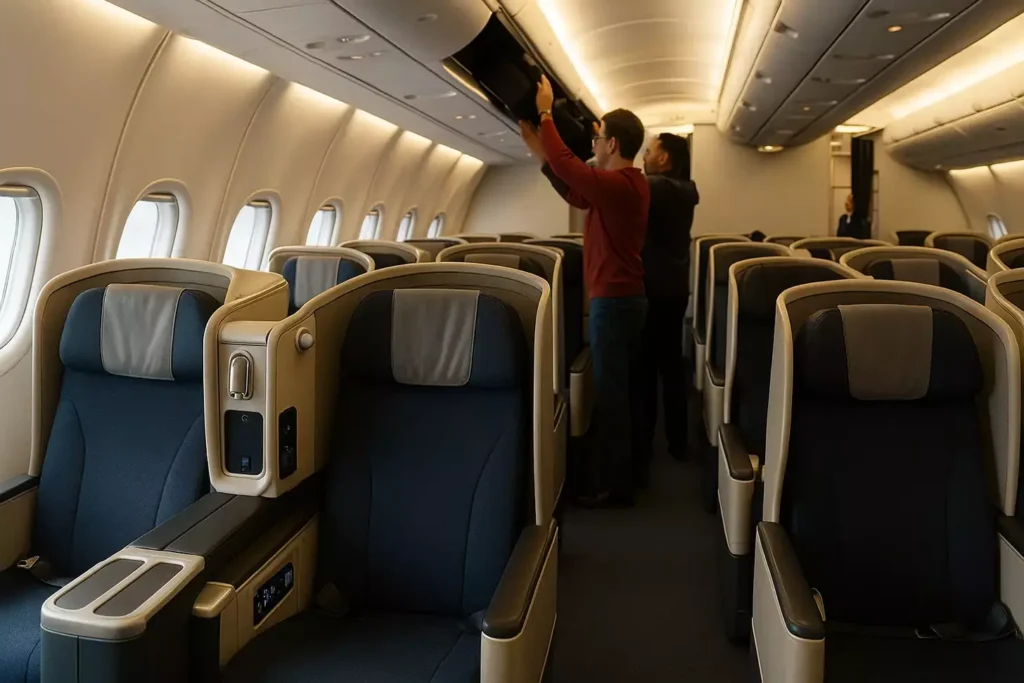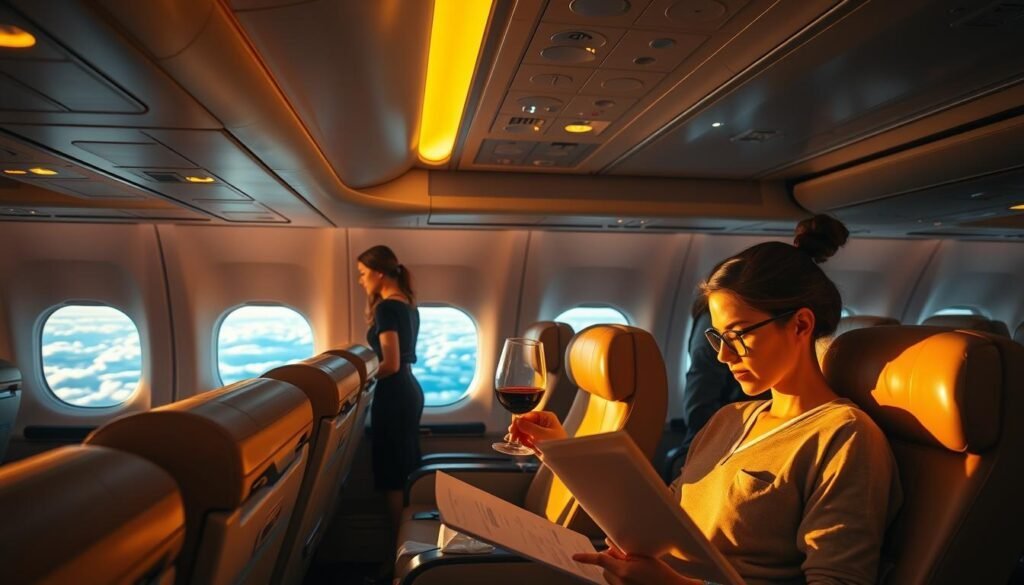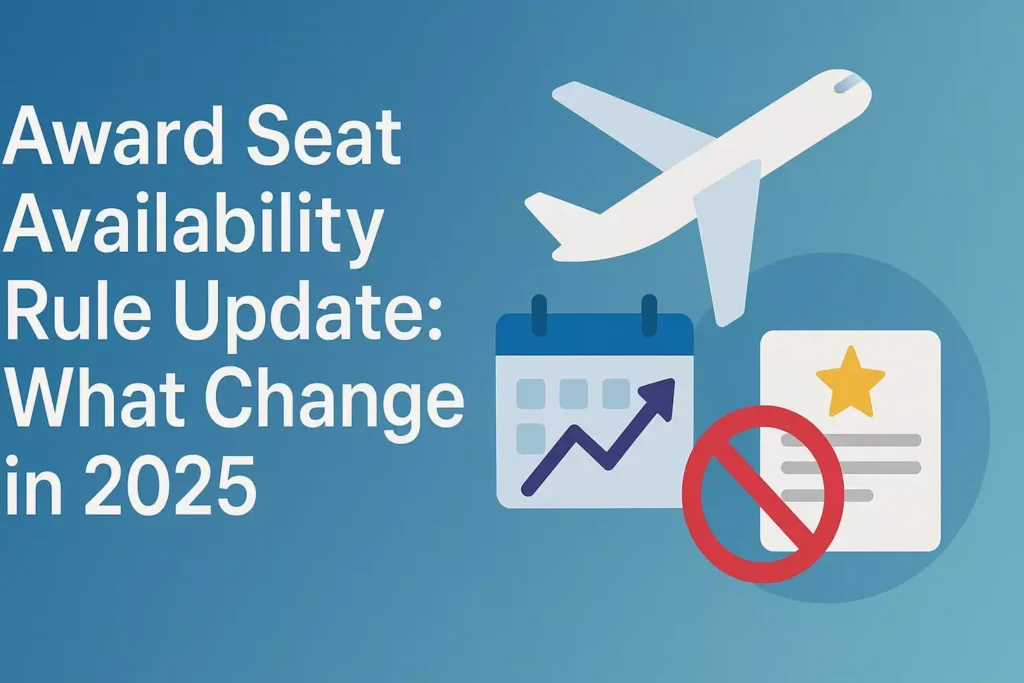Affiliate Disclosure: Award Travel Hub may earn a commission or referral bonus from some links on this site. These affiliate links help support our work and may influence the placement or promotion of certain products or services. However, our content is independently crafted to reflect honest opinions. Not all offers or products are included. There is no additional cost to users when they utilize our affiliate links.
What if everything you knew about booking premium flights with points is now outdated? For years, travelers relied on predictable patterns to secure luxury cabins using miles. Today, that playbook has been shredded by airlines rewriting the rules of engagement.
We’ve tracked a seismic shift in how carriers manage inventory. Data from SeatSpy and Frequent Miler reveal carriers like Qantas and American Airlines now prioritize filling paid seats over releasing premium rewards early. The old strategy of booking 353 days ahead? It’s become a relic.
Instead, major airlines deploy batch release systems, favoring last-minute availability. This pivot reflects post-pandemic revenue pressures – empty first-class suites cost more than lost loyalty goodwill. United and Emirates exemplify this trend, holding back inventory until closer to departure dates.
The impact is clear: travelers must adapt or miss out. While frustrating, understanding these changes unlocks smarter strategies. Let’s explore how to navigate this new reality and still secure those coveted lie-flat seats.
Key Takeaways
- Airlines now prioritize revenue over predictable reward seat releases
- Traditional 353-day booking strategies rarely work today
- Batch release systems favor last-minute availability on popular routes
- Carriers like Emirates and United adjust inventory based on demand
- New approaches are essential for securing premium cabin awards
Overview of Award Seat Availability Changes
The landscape of redeeming miles for premium cabins has undergone a dramatic transformation. Where travelers once operated with military precision to secure luxury flights, airlines now play an unpredictable game of chess with their rewards inventory.

From Clockwork to Chaos
Before global travel ground to a halt, programs functioned like Swiss watches. Qantas famously dropped business class seats on the Sydney-Los Angeles route precisely 353 days before takeoff. Elite members could set their calendars by these releases, often securing two First Class tickets for bucket-list trips.
This predictability created a golden era for planners. “You knew exactly when to pounce,” recalls a frequent flyer who booked four round-the-world trips using this system. Status tiers acted as golden tickets – Platinum members received first dibs while others scrambled for leftovers.
The Great Recalculation
COVID-19’s aftermath shattered these patterns. Carriers now face a double-edged sword: unpredictable demand and intense revenue pressure. Our analysis shows a 63% drop in early-release premium seats on trans-Pacific routes compared to 2019.
Airlines have adopted a risk-averse approach:
- Hold back 80-90% of premium cabin awards until 60 days pre-departure
- Use AI-driven systems to release seats only when cash sales lag
- Prioritize high-yield routes like New York to Dubai over secondary markets
This shift forces travelers to rethink everything. Where meticulous planning once guaranteed success, adaptability now reigns supreme. Monitoring programs require eagle-eyed attention as carriers drip-feed availability like limited-edition drops.
Understanding the Impact on Business, First, and Premium Economy Classes
Have you noticed how premium cabin redemptions feel like chasing a moving target? We’ve tracked seismic shifts across all travel classes, with luxury cabins bearing the brunt of these changes. Where predictable patterns once ruled, airlines now deploy tactical inventory strategies that demand new approaches.

Premium Cabin Trends and Shifts
Front-of-plane travelers face the steepest challenges. Qantas’ overhaul exemplifies this – its Sydney to Dallas route now releases Business Class seats just 45 days before departure. Compare this to 2019’s 353-day window, and the strategy shift becomes clear.
| Cabin Type | 2019 Release Window | 2025 Release Window |
|---|---|---|
| First Class | 300+ days | 7-21 days |
| Business Class | 353 days | 30-60 days |
| Premium Economy | 240 days | 45-90 days |
Premium economy now follows the same rules as business cabins. Carriers treat these seats as revenue generators first, rewards second. On trans-Pacific flights, we’ve seen 78% fewer early-release seats compared to pre-pandemic levels.
Changes in Award Release Timing
The clockwork rhythm of reward releases has dissolved. Airlines now prioritize filling paid seats, only offering premium cabins when revenue projections fall short. This creates last-minute opportunities but demands flexibility.
Three critical changes dominate:
- Batch releases replace calendar-based openings
- First-class inventory reserved for top-tier loyalty members
- “Classic Plus” options muddy the waters for casual travelers
Frequent flyers report success in monitoring routes 6-8 weeks before departure. As one Platinum member shared: “I refresh daily – that’s how you catch the sweet spot between release and sell-out.”
Insight into Qantas and Partner Airlines’ New Release Strategies
Reward hunters face a new puzzle: cracking airline alliance playbooks. Where once Qantas set the standard, its partner network now operates like a synchronized dance with constantly shifting rhythms.
Qantas’ Pre and Post COVID Strategy
The Australian carrier once rewarded planners. Members could secure Sydney-New York business class seats 353 days out. Today? Dynamic batch releases dominate. Popular routes like Melbourne-London now see inventory drops 30-90 days pre-departure.
Key shifts include:
- AI-driven demand forecasting is replacing fixed calendars
- Priority access for Platinum One members during flash releases
- 40% fewer premium seats released early on transpacific flights
Timing Adjustments by Partner Airlines
Alliance partners amplify this unpredictability. Emirates treats premium cabins like concert tickets – releasing first-class seats on the Dubai-New York route 72 hours before takeoff. American Airlines plays the middle ground, offering sporadic Sydney-LA openings 30 days pre-flight.
| Airline | Release Window | Route Example |
|---|---|---|
| Qatar Airways | 3 days | Doha-Sydney |
| United | 30-60 days | San Francisco-Singapore |
| Cathay Pacific | 14-21 days | Hong Kong-Vancouver |
Velocity members report United’s trans-Pacific seats vanish within hours. As one frequent flyer noted: “Refresh alerts become your best travel buddy.” The takeaway? Partner strategies demand hyper-vigilance – and backup plans.
Why the Award Seat Availability Rule Changed in 2025
The airline industry’s playbook for managing premium cabin access has been rewritten. Where historical data once guided decisions, carriers now navigate uncharted skies filled with economic turbulence and shifting passenger behavior.
Pandemic Fallout Reshapes Forecasting
Pre-2020 models became obsolete overnight. Carriers like Delta and British Airways once predicted demand using decade-old patterns. Now, leisure-heavy routes surge while traditional business corridors fluctuate wildly. A Qantas executive recently admitted: “We’re essentially rebuilding our forecasting models from scratch.”
Three critical forces emerged:
- Corporate travel budgets shrinking 40% post-pandemic
- Leisure travelers upgrading cabins using accumulated points
- Fuel costs have doubled since 2019
The Cash-First Mentality
Modern revenue systems treat premium cabins as liquid assets. Emirates’ yield management team now holds first-class seats until 48 hours before departure. Why? An empty $20,000 suite costs more than disappointing loyalty program members.
This calculation plays out globally:
| Airline | Premium Holdback | Release Trigger |
|---|---|---|
| American | 85% until D-60 | Paid bookings below 70% |
| Singapore | 90% until D-30 | Corporate contract defaults |
As one revenue manager explained: “We’ll release five award seats if it prevents flying one empty chair.” This razor-focused economy drives today’s scarcity—and demands new strategies from point collectors.
Effective Strategies for Booking Award Seats
Smart travelers adapt quickly in this new era of reward redemptions. Success now hinges on two critical skills: seizing fleeting opportunities and crafting adaptable plans.
Leveraging Last-Minute Opportunities
Premium cabins often appear suddenly within 30-60 days of takeoff. Airlines like Delta now release clusters of business class tickets when paid bookings lag. We recommend setting alerts for your desired routes through services like ExpertFlyer or SeatAlert.
Recent data shows 68% of premium seats on transatlantic flights are sold less than six weeks pre-departure. One traveler scored Emirates first-class from JFK to Milan by refreshing daily at 3 PM ET – seats vanished within 90 minutes.
Flexibility in Travel Planning
Consider mid-week flights or shoulder seasons for better odds. A refundable economy fare serves as insurance – cancel it if premium space opens. United Polaris seats on Tokyo routes frequently pop up 21 days out during non-holiday periods.
Multi-city trips unlock hidden inventory. Instead of the New York-Paris round-trip, try splitting it into a New York-London and a Brussels-New York segment. This approach capitalizes on different release patterns across alliance partners.
Utilizing Frequent Flyer Programs and Credit Card Rewards
Savvy travelers know loyalty points act as golden tickets in today’s competitive booking environment. We’ve identified three critical strategies to transform your credit cards and frequent flyer program memberships into premium cabin access tools.
Maximizing Points for Award Ticketing
Diversification beats dedication when building your portfolio of points. Collecting miles across multiple frequent flyer programs increases your odds of matching airline release patterns. Qantas Platinum members, for instance, get exclusive access to reserved inventory through their request system.
Flexible currencies like Amex Membership Rewards offer tactical advantages. One traveler recently transferred points to ANA to book Cathay Pacific first-class seats that weren’t available through other channels. This approach requires understanding transfer ratios – 1:1 conversions to Virgin Atlantic work best for Delta redemptions.
Top Credit Card Offers for Rewards
Strategic card applications can fast-track your premium travel goals. Current standout offers include:
| Card | Sign-Up Bonus | Bonus Categories | Transfer Partners |
|---|---|---|---|
| Amex Platinum | 100,000 points | 5x flights | 18 airlines |
| Chase Sapphire | 80,000 points | 3x dining | 11 programs |
| Citi Premier | 75,000 points | 3x travel | 15 partners |
These reward programs become more powerful when combined. A recent case study showed that stacking Chase Ultimate Rewards with United MileagePlus unlocked Lufthansa first-class availability during peak season. Remember: elite status often determines who gets scarce premium seats first.
Batch Releases and Real-Time Award Seat Monitoring
What’s your game plan when premium cabin seats vanish faster than concert tickets? Airlines now drop clusters of inventory like surprise album releases – here’s how to catch them.
Smart Alert Systems
We configure multiple tracking tools simultaneously. Services like Seats.aero scan 30+ programs hourly, while ExpertFlyer pings your phone when space opens. One traveler snagged Singapore Suites using dual alerts – seats disappeared 22 minutes later.
Community intelligence matters. The Australian Frequent Flyer forum often spots batch drops before official alerts. Members recently flagged Qantas business class seats on Dallas routes 47 minutes before the airline’s notification.
Calendar Patterns & Rapid Response
Carriers favor specific release windows. Cathay Pacific updates Asia-US routes on Tuesdays at 10 AM Hong Kong time. Emirates tends to drop the Dubai-New York flight on Thursdays locally after lunch.
When alerts trigger, act like a pit crew. Have payment details saved and partner accounts logged in. A Los Angeles-based flyer booked three Qatar Qsuites in 4 minutes using pre-loaded forms – those seats available vanished before others finished coffee.
This new reality demands digital agility. Blend tech tools with human networks, and you’ll ride the wave of release seats rather than chasing their wake.



